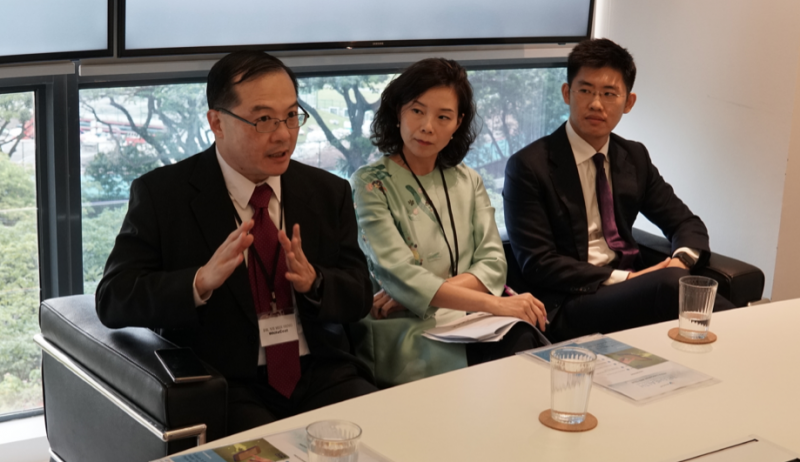On Tuesday, 29 January 2019, WhiteCoat hosted a panel discussion with experts where they took a deep dive into healthtech trends around the region, the evolution and importance of telehealth, and the benefits and challenges that follow in the adoption of its services. Panellists included Dr. Yii Hee Seng, Executive Chairman of WhiteCoat; Patricia Quek, UBS Country Team Head; and Dr. Manaen Ma, Healthcare Specialist at Deloitte’s Future Healthcare Centre of Excellence.

Telehealth – which lets users access healthcare services remotely through a mobile device – can help the time-strapped and mobility-restricted individuals receive professional healthcare anytime, anywhere. In digitalising the nation, the government has highlighted the need for technologies to improve access, affordability and quality of healthcare services for Singaporeans. As the current tech-savvy population ages, telehealth will become an even bigger part of our nation’s future healthcare needs. While it is set to gain traction locally and in the region, the challenges and misconceptions surrounding telehealth should be addressed to provide clarity while capitalising on its strengths.

Healthcare/healthtech trends and developments in the region, and what they mean for the future:
Commenting on the overall landscape of healthcare in Asia, Dr. Ma shared that an ageing population will result in a high prevalence of chronic diseases that requires long-term healthcare. This demographic will thus be able to benefit from telemedicine and technology such as artificial intelligence (AI) and robotics surgery.
This is especially so in countries with low clinic-to-population density such as remote Indonesia, where the nearest available doctor or hospital might be a few hours’ worth of travel time away. With telehealth, patients will be able to consult with doctors remotely. Likewise, with the rise of 5G infrastructure and cloud-based data storage and multi-point access, hospitals and other primary care providers will be able to share patients’ session data, which can help to boost efficiency and effectiveness while reducing healthcare costs for patients.
The healthtech landscape has also seen a surge in investments in recent years – In 2018, Singapore saw inbound investments of US$107M poured into local healthtech companies, placing the country the fourth largest healthtech market in Asia Pacific. On this matter, Ms Quek explained that there is a high level of interest as investors are users of healthcare services themselves. Further, there is a growing demand for personalised treatments and medicines as consumers proactively seek to own their healthcare needs.
More importantly, in addition to financial returns, next-generation investors are increasingly focused on investments with sustainability angles. In selecting investments, investors are more inclined towards companies that focus on sustainability for future generations.
The evolution and importance of telehealth and telemedicine in the digitalisation of Singapore
Healthcare is one of the least digitised industries historically but advancements in offline to online digitalisation and data collection will bring it up to date. According to a UBS research, Ms Quek shared that the amount of data generated by the healthcare industry globally in 2030 will be equivalent to the total amount of data generated by all other industries in 2017.
The healthcare industry lets set to grow exponentially, driven by improved processing power and Big Data analytics. Another key benefit to note would be the provision of personalised healthcare where one has greater control over courses of treatment, care provider selection and pricing. The increased flow of useful data between and amongst care providers and ancillary services will help the industry transition from one that is prescriptive in its status quo, to one that is predictive in the near future.
Benefits and challenges in the adoption of telehealth services for individuals and companies
Telehealth was created with the intention to increase accessibility to healthcare, while keeping costs low and affordable for patients requiring non-emergent medical care. For instance, telehealth provides greater convenience for patients as they can access their electronic data records anywhere, even when travelling overseas. Patients with long term prescriptions can also utilise telehealth for medications, without having to go through the lengthy hassle of consulting a physician at a clinic for the same management advice for a long-standing condition. Lastly, patients with mobility restrictions can find telemedicine very useful, as their caregivers need not take time off to accompany them to the doctors’.
Even in cases where emergent care is quite necessary, Ms Quek observed that new technologies with monitoring capabilities such as wearables can alert one from impending medical conditions such as heart attacks or the onset of chronic disease, thus highlighting the value that telehealth can bring to one’s quality of life.
As appropriately noted by Dr. Yii: “Telehealth is not meant to replace traditional doctor-patient processes. Instead, it is here to complement the state-of-play, and act as an extension of current healthcare services.”


